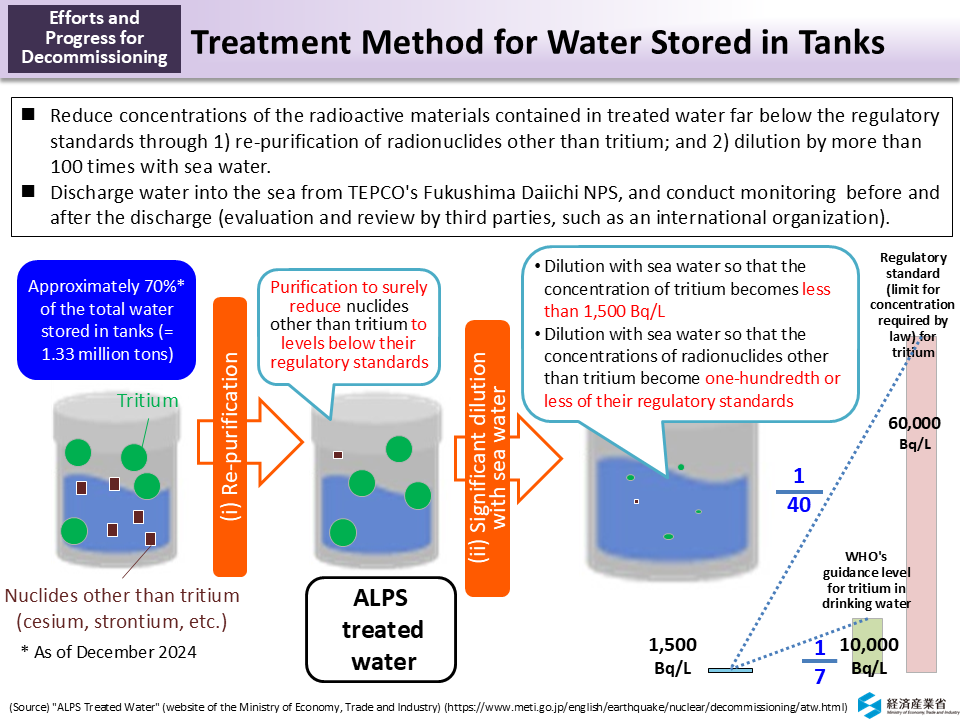Treatment Method for Water Stored in Tanks
On April 13, 2021, the Government of Japan defined “ALPS treated water” as water wherein radionuclides other than tritium satisfy “their regulatory standards for discharge into the environment” and announced its basic policy to discharge ALPS treated water into the sea. On August 22, 2023, prospects for the day for initiating the discharge into the sea were presented, and the discharge was commenced on August 24, 2023. The basic policy provides that ALPS treated water is to be discharged into the sea after diluting it by more than 100 times with sea water to reduce the concentration of tritium contained therein to less than 1,500 Bq/L. This value of 1,500 Bq/L is one-fortieth of the regulatory standard (limit for concentration required by law) for tritium that is applied to NPSs under operation and is around one-seventh of the WHO's guidance level for tritium in drinking water (Guidelines for Drinking-Water Quality). Through this dilution, nuclides other than tritium are also diluted to below one hundredth of the regulatory standards for discharge into the environment (the sum of ratios of concentrations required by law). (Related to p.15 of Vol. 2, “Regulatory Standards for Discharging Radioactive Materials into the Environment”)
Water treated by ALPS and other equipment has been stored in tanks installed within the premises of Tokyo Electric Power Company (TEPCO)'s Fukushima Daiichi NPS after the accident. However, as of December 2024, approximately 70% of the water stored in tanks still contained radioactive materials at concentrations exceeding the regulatory standards, in addition to tritium. Such water does not meet the definition of “ALPS treated water.” This is because in around 2013, when the operation of ALPS commenced, (i) its purification capacity was inferior, and (ii) as an enormous amount of contaminated water was generated, the priority was placed on first satisfying the regulatory standards for the storage within the NPS premises in order to reduce radiation risks as promptly as possible.
Accordingly, in line with the basic policy, before discharging the water stored in tanks into the sea, purification by using ALPS or reverse osmosis membrane equipment is to be conducted again (secondary treatment) to satisfy the regulatory standards for environmental discharge, which are stricter than the regulatory standards for the storage within the NPS premises. The performance test on secondary treatment, which Tokyo Electric Power Company Holdings conducted from September 2020, confirmed that nuclides other than tritium can be purified to levels below the regulatory standards for environmental discharge.
- Included in this reference material on March 31, 2022
- Updated on March 31, 2025

